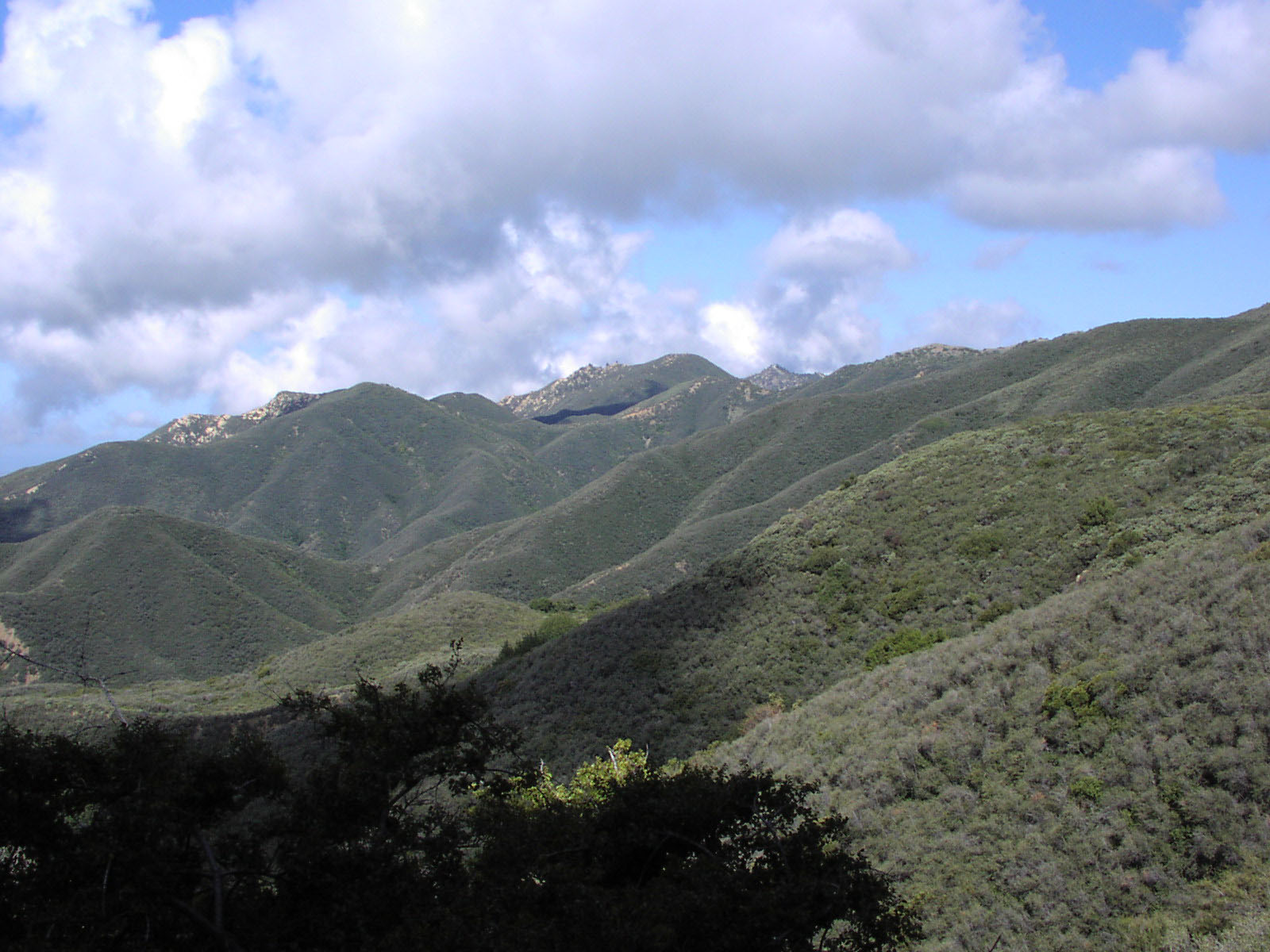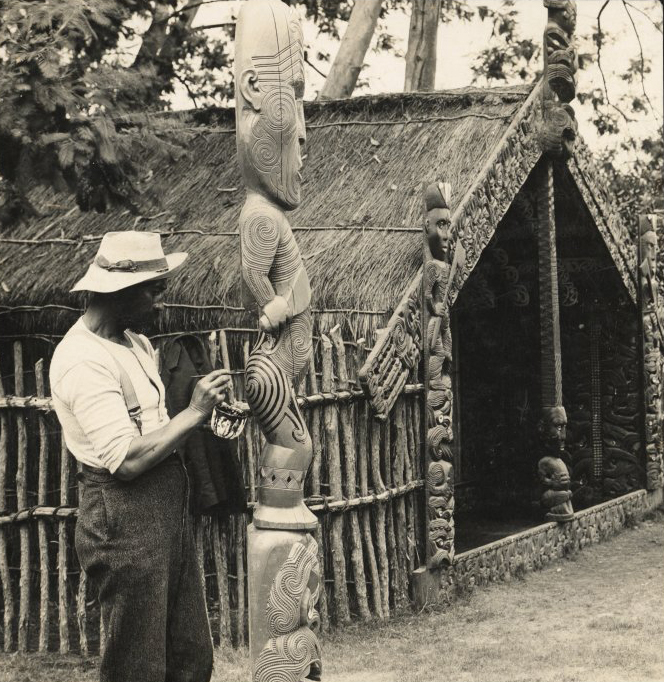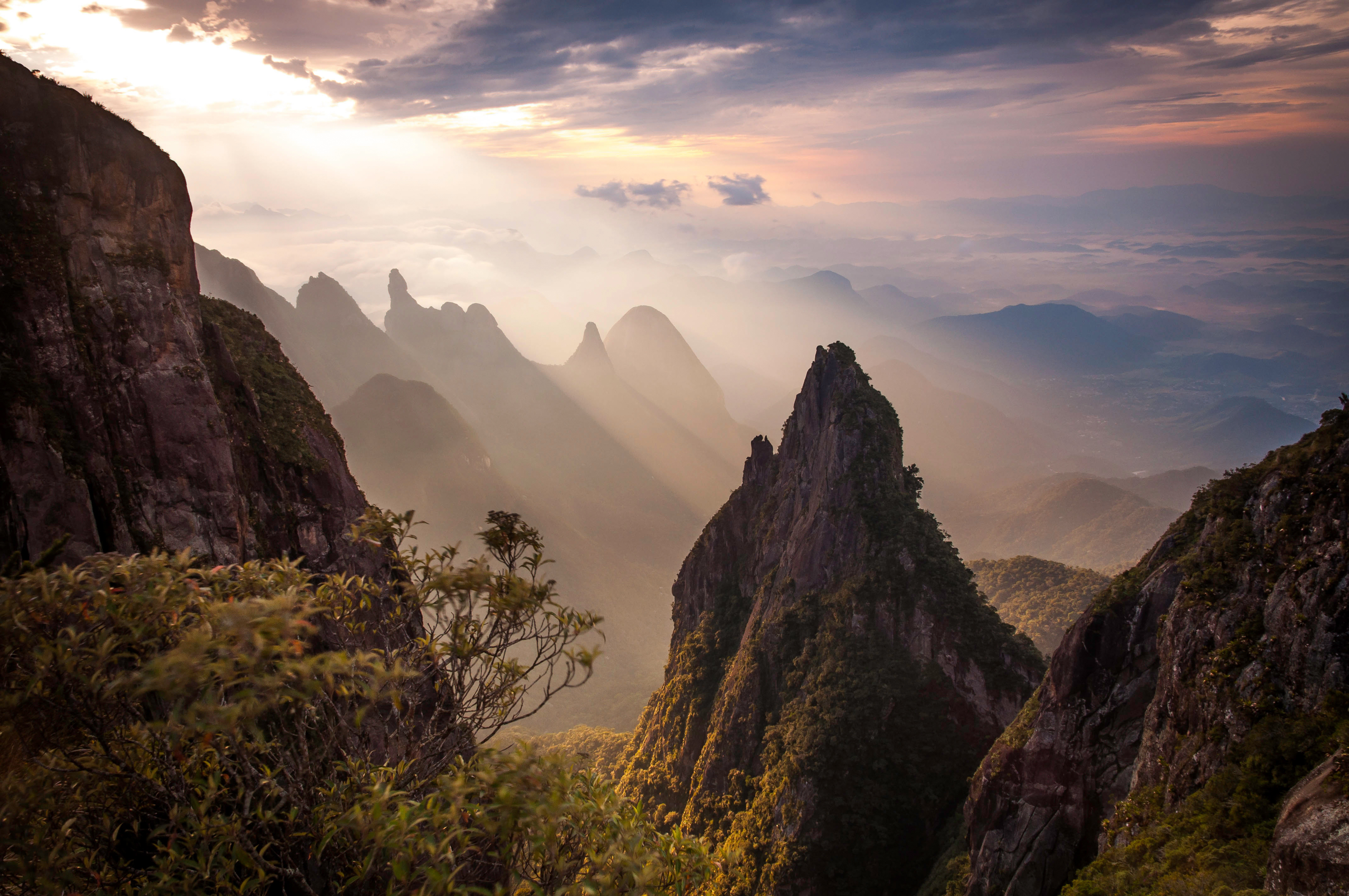|
Cerro Cabrillo
Cerro Cabrillo, also known locally as Cabrillo Peak, is a rocky mountain in eastern Morro Bay State Park, San Luis Obispo County, California, San Luis Obispo County, central California. Geography Cerro Cabrillo is one of the Nine Sisters, a group of nine volcanic landmarks in the area. Others include Morro Rock and Hollister Peak. It is named after Juan Rodríguez Cabrillo, a Spanish maritime explorer, who was sailing off the coast in 1542. The rock outcrop, composed mostly of rhyodacite, is a volcanic plug formed when magma welled up underneath a layer of softer rock and solidified. The softer overlying rock has since eroded away, leaving a distinct, rugged shape. On its east face is a rock formation named Tiki Rock, because of its resemblance to a Polynesian Tiki carving. Access The slopes and peak of Cerro Cabrillo are popular with hikers and rock climbers, with trailheads in Morro Bay State Park. Its slopes support many chaparral and coastal sage scrub wild flowers, su ... [...More Info...] [...Related Items...] OR: [Wikipedia] [Google] [Baidu] |
Black Hill, California
Black Hill is a mountain situated in Morro Bay, California, part of Morro Bay State Park. It is one of a series of volcanic plugs called the Nine Sisters. Monterey Pine forest There is a forest of Pinus radiata, Monterey Pine ''(Pinus radiata)'' trees on Black Hill, called Fleming's Forest, planted by John Fleming, a park superintendent. Fleming was working on another project and ordered twice as many trees as he needed, thinking that he would not get his entire order. Nevertheless, he received it in full and used the surplus on Black Hill. Many of the trees have died or are dying from pine pitch canker, a fungal disease which also threatens the Monterey pine's remnant native groves in Cambria, California, Cambria and on the Monterey Peninsula. References External links * {{Nine Sisters Nine Sisters Morro Bay Landforms of San Luis Obispo County, California Volcanic plugs of California Hills of California Volcanoes of California ... [...More Info...] [...Related Items...] OR: [Wikipedia] [Google] [Baidu] |
Magma
Magma () is the molten or semi-molten natural material from which all igneous rocks are formed. Magma (sometimes colloquially but incorrectly referred to as ''lava'') is found beneath the surface of the Earth, and evidence of magmatism has also been discovered on other terrestrial planets and some natural satellites. Besides molten rock, magma may also contain suspended crystals and volcanic gas, gas bubbles. Magma is produced by melting of the mantle (geology), mantle or the Crust (geology), crust in various tectonics, tectonic settings, which on Earth include subduction zones, continental rift (geology), rift zones, mid-ocean ridges and Hotspot (geology), hotspots. Mantle and crustal melts migrate upwards through the crust where they are thought to be stored in magma chambers or trans-crustal crystal mush, crystal-rich mush zones. During magma's storage in the crust, its composition may be modified by Fractional crystallization (geology), fractional crystallization, contaminati ... [...More Info...] [...Related Items...] OR: [Wikipedia] [Google] [Baidu] |
Mountains Of Southern California
A mountain is an elevated portion of the Earth's crust, generally with steep sides that show significant exposed bedrock. Although definitions vary, a mountain may differ from a plateau in having a limited summit area, and is usually higher than a hill, typically rising at least above the surrounding land. A few mountains are isolated summits, but most occur in mountain ranges. Mountains are formed through tectonic forces, erosion, or volcanism, which act on time scales of up to tens of millions of years. Once mountain building ceases, mountains are slowly leveled through the action of weathering, through slumping and other forms of mass wasting, as well as through erosion by rivers and glaciers. High elevations on mountains produce colder climates than at sea level at similar latitude. These colder climates strongly affect the ecosystems of mountains: different elevations have different plants and animals. Because of the less hospitable terrain and climate, mountains te ... [...More Info...] [...Related Items...] OR: [Wikipedia] [Google] [Baidu] |
Morro Bay
Morro Bay (''Morro'', Spanish for "Hill") is a seaside city in San Luis Obispo County, California, United States. Located on the Central Coast of California, the city's population was 10,757 as of the 2020 census, up from 10,234 at the 2010 census. The town overlooks Morro Bay, a natural embayment with an all-weather, small-craft, commercial and recreational harbor. History The prehistory of Morro Bay relates to Chumash settlement, particularly near the mouth of Morro Creek. At least as early as the Millingstone Horizon thousands of years before present, an extensive settlement existed along the banks and terraces above Morro Creek. A tribal site on present-day Morro Bay was named ''tsɨtqawɨ'', Obispeño for "Place of the Dogs". The first recorded Filipinos to visit America arrived at Morro Bay on October 18, 1587, from the Spanish galleon ''Nuestra Señora de la Esperanza''; one of whom was killed by local Native Americans while scouting ahead. The first Europea ... [...More Info...] [...Related Items...] OR: [Wikipedia] [Google] [Baidu] |
Sidalcea Hickmanii
''Sidalcea hickmanii'' is a species of flowering plant in the mallow family known generally by the common name chaparral checkerbloom. Distribution ''Sidalcea hickmanii'' is endemic to California, where it grows in the Central Coast Ranges, the Transverse Ranges and parts of the northern coast. There are four subspecies, most of which are separated geographically. The plant grows in chaparral and other habitat, sometimes on serpentine soils. Description This perennial herb produces a rough-haired stem up to a meter tall with a woody caudex at the base. The leaves have wide, fan-shaped blades which have rippled edges or divisions into narrow lobes. The inflorescence is an array of several racemes of flowers. Each has pinkish to purplish petals up to 2.5 centimeters long. Subspecies *''Sidalcea hickmanii'' ssp. ''anomala'' - Cuesta Pass checkerbloom is a rare subspecies known only from the vicinity of the Hwy. 101 Cuesta Pass in the southern Santa Lucia Mountains, in San Luis O ... [...More Info...] [...Related Items...] OR: [Wikipedia] [Google] [Baidu] |
Chlorogalum Pomeridianum
''Chlorogalum pomeridianum'', the wavy-leafed soap plant, California soaproot, or Amole, is the most common and most widely distributed of the soap plants, soaproots or amoles, which make up the genus ''Chlorogalum'' of flowering plants.''Jepson Manual'' (1993) ''Chlorogalum pomeridianum'' . accessed 3.23.2013 It is occasionally known as the "wild potato", but given the plant's lack of either resemblance or relationship to the potato, this name is not recommended. It is found in most of California from the coasts to the western foothills of the Sierra Nevada (U.S.), Sierra Nevada, and in the Klamath Mountains in southwestern Oregon, but not in either state's desert regions. Wavy-leafed soap plant grows on rock bluffs, grasslands, chaparral, an ... [...More Info...] [...Related Items...] OR: [Wikipedia] [Google] [Baidu] |
Acmispon Glaber
''Acmispon glaber'' (previously ''Lotus scoparius'') (common deerweed, deer weed, deervetch, California broom or western bird's-foot trefoil) is a perennial subshrub in the family Fabaceae (pea family). The plant is a pioneer species found in dry areas of California, Arizona, and Mexico. It is commonly found in many areas including chaparral, coastal sand and roadsides at elevations below 1500 m. Description The ''Acmispon glaber'' stems are green, erect, somewhat branched, with small, deciduous, pinnate leaves consisting of three to six leaflets. The plant blooms from about March to August and has flowers that are bilateral, small (7–11 mm), yellow, and clustered together in an inflorescence consisting of two to seven flowers in the upper leaf axils. The flowers become reddish with age. The fruit consists of a curved legume with two seeds. Ecology ''Acmispon glaber'' is a food consumed by numerous wildlife, providing intake for hummingbirds, bees, butterfl ... [...More Info...] [...Related Items...] OR: [Wikipedia] [Google] [Baidu] |
Coastal Sage Scrub
Coastal sage scrub, also known as coastal scrub, CSS, or soft chaparral, is a low scrubland plant community of the California coastal sage and chaparral subecoregion, found in coastal California and northwestern coastal Baja California. It is within the California chaparral and woodlands ecoregion, of the Mediterranean forests, woodlands, and scrub biome. Characteristics ;Plant community Coastal sage scrub is characterized by low-growing aromatic, and drought-deciduous shrubs adapted to the semi-arid Mediterranean climate of the coastal lowlands. The community is sometimes called "soft chaparral" due to the predominance of soft, drought-deciduous leaves in contrast to the hard, waxy-cuticled leaves on sclerophyllous plants of California's chaparral communities. ;Flora Characteristic shrubs and subshrubs include: * California sagebrush (''Artemisia californica'') * Black sage (''Salvia mellifera'') * White sage (''Salvia apiana'') * California buckwheat (''Eriogonum fasci ... [...More Info...] [...Related Items...] OR: [Wikipedia] [Google] [Baidu] |
Chaparral
Chaparral ( ) is a shrubland plant plant community, community found primarily in California, southern Oregon, and northern Baja California. It is shaped by a Mediterranean climate (mild wet winters and hot dry summers) and infrequent, high-intensity crown fires. Many chaparral shrubs have hard sclerophyllous evergreen leaves, as contrasted with the associated soft-leaved, drought-deciduous, scrub community of coastal sage scrub, found often on drier, southern-facing slopes. Three other closely related chaparral shrubland systems occur in southern Arizona, western Texas, and along the eastern side of central Mexico's mountain chains, all having summer rains in contrast to the Mediterranean climate of other chaparral formations. Etymology The name comes from the Spanish language, Spanish word , which translates to "place of the scrub oak". ''Scrub oak'' in turn comes from the Basque language, Basque word , which has the same meaning. Overview In its natural state, chaparral is ... [...More Info...] [...Related Items...] OR: [Wikipedia] [Google] [Baidu] |
Tiki
In Māori mythology, Tiki is the first man created by either Tūmatauenga or Tāne. He found the first woman, Marikoriko, in a pond; she seduced him and he became the father of Hine-kau-ataata. By extension, a tiki is a large or small wooden, pounamu or other stone carving in humanoid form, although this is a somewhat archaic usage in the Māori language, where a tiki is usually a hei-tiki, a pendant worn around the neck. Hei-tiki are often considered taonga, especially if they are older and have been passed down throughout multiple generations. Carvings similar to tiki and coming to represent deified ancestors are found in most Polynesian cultures. They often serve to mark the boundaries of sacred or significant sites. The word has cognates in other Polynesian languages, such as ''tii'' in Tahitian and ''kii'' in Hawaiian. In the Western world, Tiki culture, a movement inspired by various Pacific cultures, has become popular in the 20th and 21st centuries. Religion ... [...More Info...] [...Related Items...] OR: [Wikipedia] [Google] [Baidu] |
Rock Formation
A rock formation is an isolated, scenic, or spectacular surface rock (geology), rock outcrop. Rock formations are usually the result of weathering and erosion sculpting the existing rock. The term ''rock Geological formation, formation'' can also refer to specific sedimentary stratum, strata or other rock unit in stratigraphy, stratigraphic and petrology, petrologic studies. A rock structure can be created in any rock type or combination: * Igneous rocks are created when molten rock cools and solidifies, with or without crystallisation. They may be either plutonic bodies or volcanic extrusive. Again, erosive forces sculpt their current forms. * Metamorphic rocks are created by rocks that have been transformed into another kind of rock, usually by some combination of heat, pressure, and chemical alteration. * Sedimentary rocks are created by a variety of processes but usually involving deposition, grain by grain, layer by layer, in water or, in the case of terrestrial se ... [...More Info...] [...Related Items...] OR: [Wikipedia] [Google] [Baidu] |





